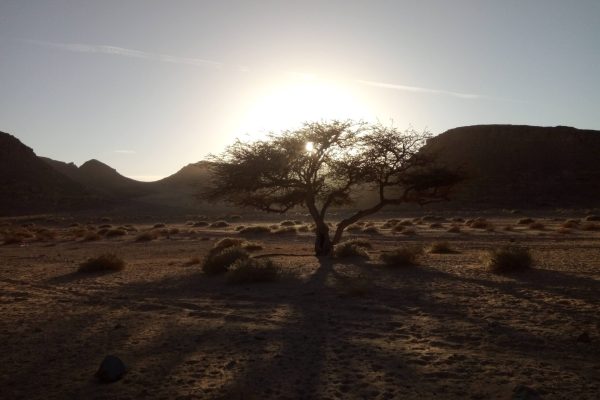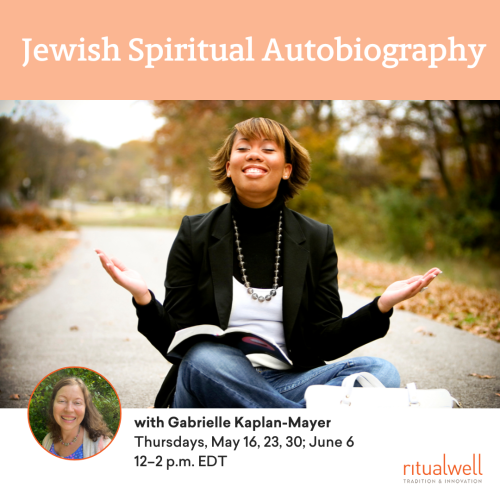Apples and Honey
Though the TorahThe Five Books of Moses, and the foundation of all of Jewish life and lore. The Torah is considered the heart and soul of the Jewish people, and study of the Torah is a high mitzvah. The Torah itself a scroll that is hand lettered on parchment, elaborately dressed and decorated, and stored in a decorative ark. It is chanted aloud on Mondays, Thursdays, and Shabbat, according to a yearly cycle. Sometimes "Torah" is used as a colloquial term for Jewish learning and narrative in general. never identifies the fruit eaten by EveEve, according to the book of Genesis, is Adam's wife, the first woman to be created. and AdamAdam is the first human being created by God. Symbolizes: Creation, humankind., in our culture, that fruit has become an apple. And given the ubiquitous nature of Christian symbolism in our society, most people also identify that first fruit with original sin, and more specifically with the sin of Eve. It is therefore important for us to reclaim the apple for what it is in our own tradition, not a symbol of women’s sin but of our initiative, our active sexuality, and our role in saving the Jewish people.
Janet Zimmern notes that when the Babylonian TalmudThe rabbinic compendium of lore and legend composed between 200 and 500 CE. Study of the Talmud is the focus of rabbinic scholarship. The Talmud has two versions, the main Babylonian version (Bavli) and the smaller Jerusalem version (Yerushalmi). It is written in Rabbinic Hebrew and Aramaic. (Sotah 11b) depicts God as the original Midwife of IsraelLit. ''the one who struggles with God.'' Israel means many things. It is first used with reference to Jacob, whose name is changed to Israel (Genesis 32:29), the one who struggles with God. Jacob's children, the Jewish people, become B'nai Israel, the children of Israel. The name also refers to the land of Israel and the State of Israel., this Divine birthing takes place under apple trees. According to the tale recounted in this section of the Talmud, when the Israelites were in Egypt, the women seduced their husbands, conceived and gave birth in apple orchards. As there were no midwives in these fields God served as midwife to the Israelite women. Thus, apples can be seen as a symbol of women’s insistence on their sexuality and their claim to the future, even in times of enslavement. To see apples in this light helps move us away from associations of women’s sexuality as sinful. This is especially important at this time of the year when we must remain attuned to the difference between repenting for things we feel we have done wrong and remaining insistent that certain culturally defined sins are in fact not sinful at all.
Raisin ChallahBraided egg bread eaten on Shabbat and holidays. Reminiscent of bread eaten by Priests in the Temple, of manna in the desert, and sustenance in general. Plural: Hallot
According to JudithJudith saved her people by seducing Holofernes, the enemy general, and then decapitating him. The story of Judith, found in the apocrypha, is associated with Chanukah (relating to the tradition of eating cheese dishes because she seduced the general and fed him dairy). Her Hebrew name is Yehudit. Solomon, the AshkenaziJew of Eastern European descent. The term also refers to the practices and customs associated with this community, often in contrast to Sephardic (Southern European) traditions. custom of eating raisin challah on Rosh HashanahThe Jewish New Year, also considered the Day of Judgment. The period of the High Holidays is a time of introspection and atonement. The holiday is celebrated with the sounding of the shofar, lengthy prayers in synagogue, the eating of apples and honey, and round challah for a sweet and whole year. Tashlikh, casting bread on the water to symbolize the washing away of sins, also takes place on Rosh Hashana. is tied to the biblical story of AbigailOne of David's wives and a prophetess, known for her cleverness and beauty. She has the longest continous monologue of any woman in Hebrew scripture. Her Hebrew name is Avigail.. Abigail, one of the seven women considered a prophet by the rabbis of the Talmud, appears in the early chapters of the First Book of Samuel. She is portrayed in this story as a smart woman who recognizes the importance of the soon-to-be-king David. She overturns her boorish husband’s snub of David and presents David with many gifts including two hundred loaves of bread and one hundred clusters of raisins. Her speech to David is a richly nuanced, strategically brilliant display of foresight and cunning. It is also a carefully articulated request for forgiveness for the previous wrongdoings of her household toward David and his party. David, won over by Abigail’s speech and gifts, decides to spare her and her household. Ten days later her husband dies, and she becomes a wife of the first king of Israel.
What does this story have to do with the High Holidays? The hint is the ten days. Which ten days pass between Abigail’s speech and the miraculous death of her husband? According to the commentators, the ten days of repentance. Thus it was on Rosh Hashanah that Abigail came to David with bread and raisins, taking her future into her own hands and changing the course of her life. Let us all tell this story around our own tables as we enjoy raisin challah and pledge to speak out on our own behalf as the prophet Abigail did on a Rosh Hashanah long ago.
More ShofarA ram's horn that is blown on the High Holidays to "wake us up" and call Jews to repentance. It is also said that its blast will herald the coming of the messiah. Symbolism
The horn, a very ancient symbol of the new moon, has long been connected to women and their menstrual cycles. At the entrance of a cave in southern France there is a wall carving from 25,000–20,000 BCE of a Paleolithic goddess holding a bison horn in one hand while she rests the other on her round belly. In the Song of HannahHannah is the mother of the prophet Samuel, who, through her prayers, is rewarded a child. She herself is also considered a prophet. Hannah's intense devotional style of prayer becomes the model, in rabbinic Judaism, for prayer in general., read on Rosh Hashanah, the horn is mentioned twice, in the first and last verses. According to Rabbi Lisa Edwards, the reference to “a horn exalted by God’s annointed” in the first verse of Hannah’s song makes new sense in the context of Rosh Hashanah. Edwards points out that the shofar is further connected with Hannah by midrashim that associate the number of benedictions recited during the shofar service with the number of times Hannah mentions the name of God in her song.
The other matriarch who is tied by midrashic literature to the sounds of the shofar is SarahThe first matriarch, wife of Abraham, and mother of Isaac, whom she birthed at the age of 90. Sarah, in Rabbinic tradition, is considered holy, beautiful, and hospitable. Many prayers, particularly the Amidah (the central silent prayer), refer to God as Magen Avraham – protector of Abraham. Many Jews now add: pokehd or ezrat Sarah – guardian or helper of Sarah.. According to diverse rabbinic commentaries, Sarah cries out at the discovery of the deed of the Binding of IsaacAbraham and Sarah's much-longed-for son and the second Jewish patriarch. Isaac is nearly sacrificed by his father at God's command (Genesis 22). He is married to Rebecca and is the father of Esau and Jacob. His Hebrew name is Yitzchak.. Her cries are the sounds of the shofar.
First published in Ma’yan’s Journey, Fall 2000










